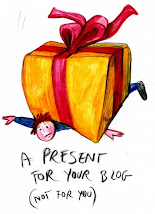




























 Bhimrao Ramji Ambedkar was born in the British-founded town and military cantonment of Mhow in the Central Provinces (now in Madhya Pradesh). He was the 14th and last child of Ramji Maloji Sakpal and Bhimabai. His family was of Marathi background from the town of Ambavade in the Ratnagiri district of modern-day Maharashtra. They belonged to the Hindu, Mahar caste, who were treated as so called untouchables and subjected to intense socio-economic discrimination. Ambedkar's ancestors had for long been in the employment of the army of the British East India Company, and his father Ramji Sakpal served in the Indian Army at the Mhow cantonment. He had received a degree of formal education in Marathi and English, and encouraged his children to learn and work hard at school.
Bhimrao Ramji Ambedkar was born in the British-founded town and military cantonment of Mhow in the Central Provinces (now in Madhya Pradesh). He was the 14th and last child of Ramji Maloji Sakpal and Bhimabai. His family was of Marathi background from the town of Ambavade in the Ratnagiri district of modern-day Maharashtra. They belonged to the Hindu, Mahar caste, who were treated as so called untouchables and subjected to intense socio-economic discrimination. Ambedkar's ancestors had for long been in the employment of the army of the British East India Company, and his father Ramji Sakpal served in the Indian Army at the Mhow cantonment. He had received a degree of formal education in Marathi and English, and encouraged his children to learn and work hard at school.  As a leading Indian scholar, Ambedkar had been invited to testify before the Southborough Committee, which was preparing the Government of India Act 1919. At this hearing, Ambedkar argued for creating separate electorates and reservations for Dalits and other religious communities. In 1920, he began the publication of the weekly Mooknayak (Leader of the Silent) in Mumbai. Attaining popularity, Ambedkar used this journal to criticize orthodox Hindu politicians and a perceived reluctance of the Indian political community to fight caste discrimination. His speech at a Depressed Classes Conference in Kolhapur impressed the local state ruler Shahu IV, who shocked orthodox society by dining with Ambekdar. Ambedkar established a successful legal practice, and also organised the Bahishkrit Hitakarini Sabha to promote education and socio-economic uplifting of the depressed classes.
As a leading Indian scholar, Ambedkar had been invited to testify before the Southborough Committee, which was preparing the Government of India Act 1919. At this hearing, Ambedkar argued for creating separate electorates and reservations for Dalits and other religious communities. In 1920, he began the publication of the weekly Mooknayak (Leader of the Silent) in Mumbai. Attaining popularity, Ambedkar used this journal to criticize orthodox Hindu politicians and a perceived reluctance of the Indian political community to fight caste discrimination. His speech at a Depressed Classes Conference in Kolhapur impressed the local state ruler Shahu IV, who shocked orthodox society by dining with Ambekdar. Ambedkar established a successful legal practice, and also organised the Bahishkrit Hitakarini Sabha to promote education and socio-economic uplifting of the depressed classes. By 1927, Dr. Ambedkar decided to launch active movements against untouchability. He began with public movements and marches to open up and share public drinking water resources; also he began a struggle for the right to enter Hindu temples. He led a satyagraha in Mahad to fight for the right of the untouchable community to draw water from the main water tank of the town. Ambedkar was appointed to the Bombay Presidency Committee to work with the all-European Simon Commission in 1925. This commission had sparked great protests across India, and while its report was ignored by most Indians, Ambedkar himself wrote a separate set of recommendations for future constitutional reformers.
By 1927, Dr. Ambedkar decided to launch active movements against untouchability. He began with public movements and marches to open up and share public drinking water resources; also he began a struggle for the right to enter Hindu temples. He led a satyagraha in Mahad to fight for the right of the untouchable community to draw water from the main water tank of the town. Ambedkar was appointed to the Bombay Presidency Committee to work with the all-European Simon Commission in 1925. This commission had sparked great protests across India, and while its report was ignored by most Indians, Ambedkar himself wrote a separate set of recommendations for future constitutional reformers. In 1935, Ambedkar was appointed principal of the Government Law College, a position he held for two years. Settling in Mumbai, Ambedkar oversaw the construction of a large house, and stocked his personal library with more than 50,000 books. His wife Ramabai died after a long illness in the same year. It had been her long-standing wish to go on a pilgrimage to Pandharpur, but Ambedkar had refused to let her go, telling her that he would create a new Pandharpur for her instead of Hinduism's Pandharpur which treated them as untouchables. His own views and attitudes had hardened against orthodox Hindus, despite a significant increase in momentum across India for the fight against untouchability and he began criticizing them even as he was criticized himself by large numbers of Hindu activists. Speaking at the Yeola Conversion Conference on October 13 near Nasik, Ambedkar announced his intention to convert to a different religion and exhorted his followers to leave Hinduism.
In 1935, Ambedkar was appointed principal of the Government Law College, a position he held for two years. Settling in Mumbai, Ambedkar oversaw the construction of a large house, and stocked his personal library with more than 50,000 books. His wife Ramabai died after a long illness in the same year. It had been her long-standing wish to go on a pilgrimage to Pandharpur, but Ambedkar had refused to let her go, telling her that he would create a new Pandharpur for her instead of Hinduism's Pandharpur which treated them as untouchables. His own views and attitudes had hardened against orthodox Hindus, despite a significant increase in momentum across India for the fight against untouchability and he began criticizing them even as he was criticized himself by large numbers of Hindu activists. Speaking at the Yeola Conversion Conference on October 13 near Nasik, Ambedkar announced his intention to convert to a different religion and exhorted his followers to leave Hinduism. 
 Since 1948, Ambedkar had been suffering from diabetes. He was bed-ridden from June to October in 1954 owing to clinical depression and failing eyesight.[10] He had been increasingly embittered by political issues, which took a toll on his health. His health worsened as he furiously worked through 1955. Just three days after completing his final manuscript The Buddha and His Dhamma, it is said that Ambedkar died in his sleep on December 6, 1956 at his home in Delhi.
Since 1948, Ambedkar had been suffering from diabetes. He was bed-ridden from June to October in 1954 owing to clinical depression and failing eyesight.[10] He had been increasingly embittered by political issues, which took a toll on his health. His health worsened as he furiously worked through 1955. Just three days after completing his final manuscript The Buddha and His Dhamma, it is said that Ambedkar died in his sleep on December 6, 1956 at his home in Delhi.



